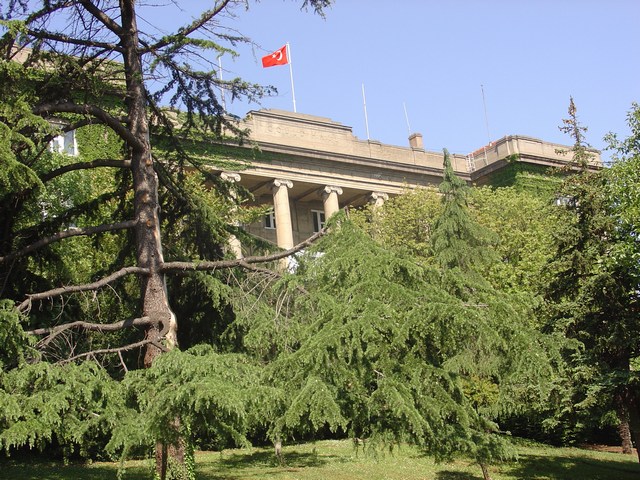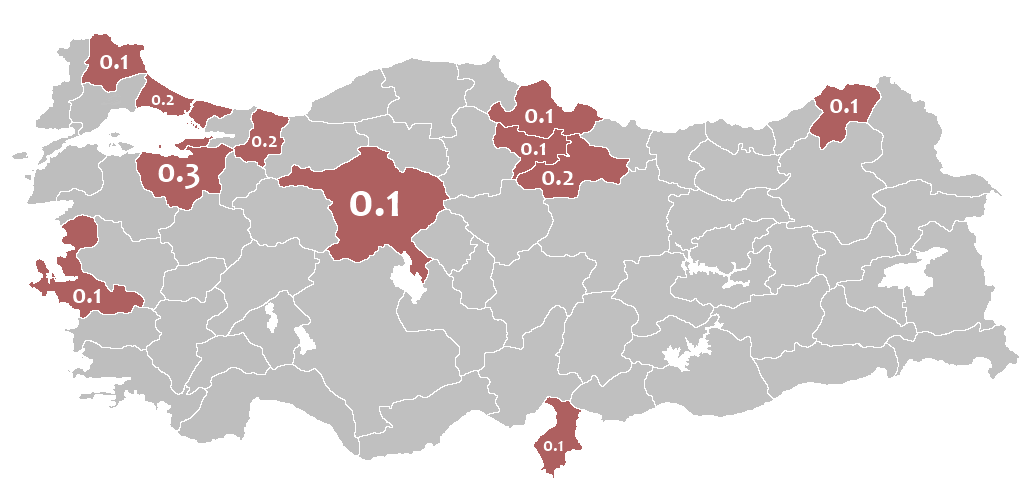|
Arnavutköy
Arnavutköy ( Albanian village; el, Μέγα Ρεύμα, Mega Revma) is a neighbourhood in Istanbul, Turkey renowned for its wooden Ottoman mansions and seafood restaurants, as well as for the campus of the prestigious Robert College with its historic buildings. It is part of the Beşiktaş district of Istanbul, and is located between Ortaköy and Bebek on the European shoreline of the Bosphorus strait. The existence of a mosque, church and synagogue in close proximity to one another serves as a reminder of Arnavutköy's old, now lost, cosmopolitanism. The coast road is usually lined with anglers and small fishing boats frequently pass Arnavutköy; the fresh fish caught is sometimes sold to the local seafood restaurants. At the eastern end of Arnavutköy the coast juts out to form Akıntıburnu (the Cape of the Current) where the waters of the Bosphorus once flowed so powerfully that small boats had to be towed round it. Infrequent Şehir Hatları (City Lines) ferries call i ... [...More Info...] [...Related Items...] OR: [Wikipedia] [Google] [Baidu] |
Albanians In Turkey
Albanians in Turkey ( sq, Shqiptarët në Turqi, tr, Türkiye'deki Arnavutlar) are ethnic Albanian citizens and denizens of Turkey. They consist of Albanians who arrived during the Ottoman period, Kosovar/ Macedonian and Tosk Cham Albanians fleeing from Serbian and Greek persecution after the beginning of the Balkan Wars, alongside some Albanians from Montenegro and Albania proper. A 2008 report from the Turkish National Security Council (MGK) estimated that approximately 1.3 million people of Albanian ancestry live in Turkey, and more than 500,000 recognizing their ancestry, language and culture. There are other estimates however that place the number of people in Turkey with Albanian ancestry and background upward to 6 million. Demographics In the census of 1965, those who spoke Albanian as first language were proportionally most numerous in Bursa (0.3%), Sakarya (0.2%), Tokat (0.2%) and Istanbul (0.2%). According to a 2008 report prepared for the National Security Co ... [...More Info...] [...Related Items...] OR: [Wikipedia] [Google] [Baidu] |
Beşiktaş
Beşiktaş () is a district and municipality of Istanbul, Turkey, located on the European shore of the Bosphorus strait. It is bordered on the north by Sarıyer and Şişli, on the west by Kağıthane and Şişli, on the south by Beyoğlu, and on the east by the Bosphorus. Directly across the Bosphorus is the district of Üsküdar. The district includes a number of important sites along the European shore of the Bosphorus, from Dolmabahçe Palace in the south to the Bebek, Istanbul, Bebek area in the north. It is also home to many inland (and relatively expensive, upper-middle class) neighborhoods such as Levent and Etiler. Some of its other well-known neighborhoods include Yıldız, Beşiktaş, Yıldız, Kuruçeşme, Ortaköy, and Arnavutköy. Beşiktaş' historic commercial centre is the quarter and Çarşı, Beşiktaş, Çarşı (literally, "marketplace"), which adjoins the small Abbasağa Park. Running in the north–south direction, Barbaros Boulevard is a major feeder r ... [...More Info...] [...Related Items...] OR: [Wikipedia] [Google] [Baidu] |
Robert College
The American Robert College of Istanbul ( tr, İstanbul Özel Amerikan Robert Lisesi or ), often shortened to Robert, or RC, is a Selective school, highly selective, Independent school, independent, mixed-sex education, co-educational Secondary school, high school in Turkey.The Education in Turkey, Turkish education system divides schools into two classes: public or private. According to this classification, Robert College is a private school. The school is situated in a wooded campus on the European side of Istanbul in the Beşiktaş district, with the historic Arnavutköy neighborhood to the east and the upscale Ulus neighborhood to the west. Founded in 1863, Robert College is the oldest continuously operating American school outside the United States. Robert College is consistently ranked as the top private high school in Turkey. The school has a long list of Robert College alumni, list of notable alumni, including entrepreneurs, politicians, journalists, artists, three List ... [...More Info...] [...Related Items...] OR: [Wikipedia] [Google] [Baidu] |
Istanbul
Istanbul ( , ; tr, İstanbul ), formerly known as Constantinople ( grc-gre, Κωνσταντινούπολις; la, Constantinopolis), is the List of largest cities and towns in Turkey, largest city in Turkey, serving as the country's economic, cultural and historic hub. The city straddles the Bosporus strait, lying in both Europe and Asia, and has a population of over 15 million residents, comprising 19% of the population of Turkey. Istanbul is the list of European cities by population within city limits, most populous European city, and the world's List of largest cities, 15th-largest city. The city was founded as Byzantium ( grc-gre, Βυζάντιον, ) in the 7th century BCE by Ancient Greece, Greek settlers from Megara. In 330 CE, the Roman emperor Constantine the Great made it his imperial capital, renaming it first as New Rome ( grc-gre, Νέα Ῥώμη, ; la, Nova Roma) and then as Constantinople () after himself. The city grew in size and influence, eventually becom ... [...More Info...] [...Related Items...] OR: [Wikipedia] [Google] [Baidu] |
Istanbul Province
) , postal_code_type = Postal code , postal_code = 34000 to 34990 , area_code = +90 212 (European side) +90 216 (Asian side) , registration_plate = 34 , blank_name_sec2 = GeoTLD , blank_info_sec2 = .ist, .istanbul , website = , blank_name = GDP (Nominal) , blank_info = 2021 , blank1_name = - Total , blank1_info = US$ 248 billion , blank2_name = - Per capita , blank2_info = US$ 15,666 , blank3_name = HDI (2019) , blank3_info = 0.846 () · 1st , timezone = TRT , utc_offset = +3 , module = , name = , government_type = Mayor–council government , governing_body = Municipal Council of Istanbul , image_shield = , established_date = 11 May 330 AD , image_m ... [...More Info...] [...Related Items...] OR: [Wikipedia] [Google] [Baidu] |
Bosphorus
The Bosporus Strait (; grc, Βόσπορος ; tr, İstanbul Boğazı 'Istanbul strait', colloquially ''Boğaz'') or Bosphorus Strait is a natural strait and an internationally significant waterway located in Istanbul in northwestern Turkey. It forms part of the continental boundary between Asia and Europe, and divides Turkey by separating Anatolia from Thrace. It is the world's narrowest strait used for international navigation. Most of the shores of the Bosporus Strait, except for the area to the north, are heavily settled, with the city of Istanbul's metropolitan population of 17 million inhabitants extending inland from both banks. The Bosporus Strait and the Dardanelles Strait at the opposite end of the Sea of Marmara are together known as the Turkish Straits. Sections of the shore of the Bosporus in Istanbul have been reinforced with concrete or rubble and those sections of the Strait prone to deposition are periodically dredged. Name The name of the ... [...More Info...] [...Related Items...] OR: [Wikipedia] [Google] [Baidu] |
Boğaziçi University
Boğaziçi University ( tr, Boğaziçi Üniversitesi), also known as Bosphorus University, is a major research university in Istanbul, Turkey. Its main campus is located on the European side of the Bosphorus, Bosphorus strait. It has six faculties and two schools offering undergraduate degrees, and six institutes offering graduate degrees. Traditionally, the language of instruction is English. Founded in 1863, as Robert College, it was the first Higher education in the United States, American higher education institution founded outside the United States. Though under Turkish administration today, the university still maintains strong ties to the American educational system. Boğaziçi University consistently ranks as Turkey's top university and has the greatest number of applicants via the Turkish university entrance examinations, making it the most selective state university in Turkey.https://tanitim.boun.edu.tr/2019-taban-puanlari 2019 YKS SONUÇLARINA GÖRE BOĞAZİÇİ Ü ... [...More Info...] [...Related Items...] OR: [Wikipedia] [Google] [Baidu] |
Rûm
Rūm ( ar, روم , collective; singulative: Rūmī ; plural: Arwām ; fa, روم Rum or Rumiyān, singular Rumi; tr, Rûm or , singular ), also romanized as ''Roum'', is a derivative of the Aramaic (''rhπmÈ'') and Parthian (''frwm'') terms, ultimately derived from Greek Ῥωμαῖοι (''Rhomaioi'', literally 'Romans'). Both terms are endonyms of the pre-Islamic inhabitants of Anatolia, the Middle East and the Balkans and date to when those regions were parts of the Eastern Roman Empire. The term ''Rūm'' is now used to describe: * Remaining pre-Islamic ethnocultural Christian minorities living in the Near East and their descendants, notably the Antiochian Greek Christians who are members of the Greek Orthodox Church of Antioch and the Melkite Greek Catholic Church of Syria, Lebanon, Jordan, Israel, Palestine, and the Hatay Province in Southern Turkey whose liturgy is still based on Koine Greek. * Orthodox Christian citizens of modern Turkey originating in the pre-I ... [...More Info...] [...Related Items...] OR: [Wikipedia] [Google] [Baidu] |
Salname
A salname (also called ''nevsal'') was an official annal of the Ottoman Empire in the 19th century. Etymology ''Salname'' comes from Persian language, Persian ''sal'' 'year' and ''name'' 'letter'. History The first salname was published in 1847. It was prepared by Ahmed Vefik Pasha, Ahmed Cevdet Pasha and Hayrullah. It was sponsored by the grand vizier Mustafa Reşit Pasha, a well known reformer. Types of the salname The main salname was the salname of the state. Beginning by 1866 the Vilayets of the Ottoman Empire, vilayet (province) administrations also published salnames about the province. There were also salnames of other institutions both governmental and non governmental. The most important salnames were reportedly the second type salnames. Because by these salnames the government could determine the resources and the conditions of the provinces.Gabor Agoston and Bruce Masters:''Encyclopedia of the Ottoman Empire'', pp.501-502 References [...More Info...] [...Related Items...] OR: [Wikipedia] [Google] [Baidu] |
Muslims
Muslims ( ar, المسلمون, , ) are people who adhere to Islam, a monotheistic religion belonging to the Abrahamic tradition. They consider the Quran, the foundational religious text of Islam, to be the verbatim word of the God of Abraham (or '' Allah'') as it was revealed to Muhammad, the main Islamic prophet. The majority of Muslims also follow the teachings and practices of Muhammad ('' sunnah'') as recorded in traditional accounts (''hadith''). With an estimated population of almost 1.9 billion followers as of 2020 year estimation, Muslims comprise more than 24.9% of the world's total population. In descending order, the percentage of people who identify as Muslims on each continental landmass stands at: 45% of Africa, 25% of Asia and Oceania (collectively), 6% of Europe, and 1% of the Americas. Additionally, in subdivided geographical regions, the figure stands at: 91% of the Middle East–North Africa, 90% of Central Asia, 65% of the Caucasus, 42% of Southeast Asi ... [...More Info...] [...Related Items...] OR: [Wikipedia] [Google] [Baidu] |
High School
A secondary school describes an institution that provides secondary education and also usually includes the building where this takes place. Some secondary schools provide both '' lower secondary education'' (ages 11 to 14) and ''upper secondary education'' (ages 14 to 18), i.e., both levels 2 and 3 of the ISCED scale, but these can also be provided in separate schools. In the US, the secondary education system has separate middle schools and high schools. In the UK, most state schools and privately-funded schools accommodate pupils between the ages of 11–16 or 11–18; some UK private schools, i.e. public schools, admit pupils between the ages of 13 and 18. Secondary schools follow on from primary schools and prepare for vocational or tertiary education. Attendance is usually compulsory for students until age 16. The organisations, buildings, and terminology are more or less unique in each country. Levels of education In the ISCED 2011 education scale levels 2 and 3 c ... [...More Info...] [...Related Items...] OR: [Wikipedia] [Google] [Baidu] |







